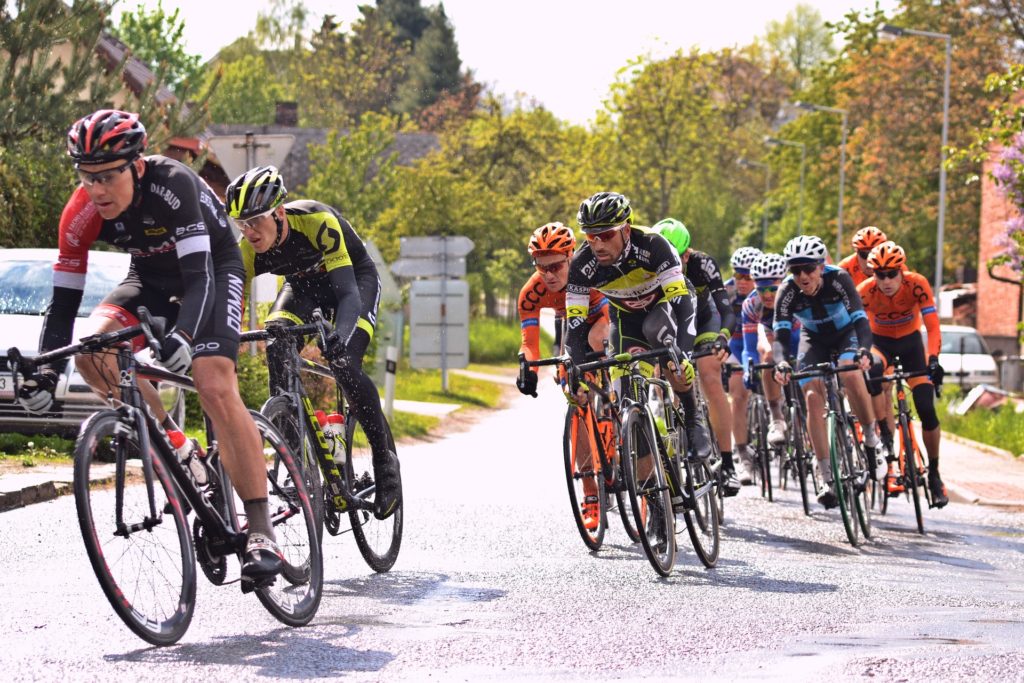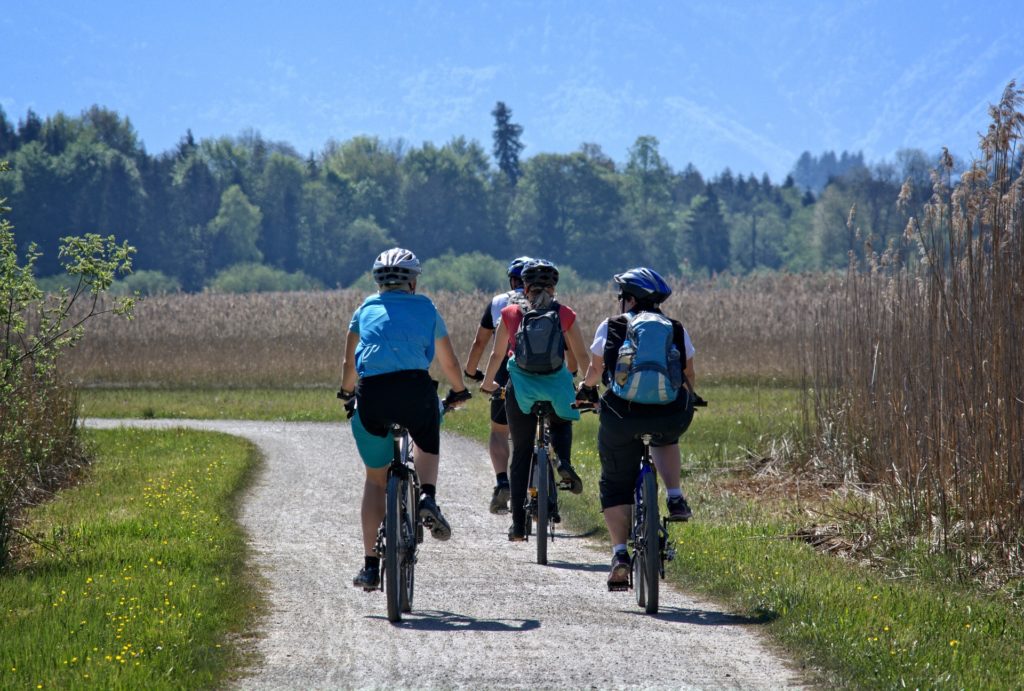Bart Haynes here in sunny San Diego with another article that is meant for cyclists who are new to riding in groups, and seasoned cyclists who could use a primer on riding etiquette. Most people start cycling by themselves or with one other person. Making the jump from riding alone or with one or two other riders to riding in a large group of riders is scary.
Mostly, it’s scary because you don’t know the unwritten rules that have naturally evolved over 100 years of riding history. So without further ado, here are some rules and information about riding in a group.
General: Why Group Riding Is Awesome

The point of riding in a group is that the person in the lead works hardest, as they take all of the force of the wind. In consequence, everyone behind the leader gets a nice break from the wind and can draft off of the person in front of them.
The implication: it’s much easier to ride in groups than alone. The larger the group, the easier the riding because you take less time out front. I spent almost a year riding alone before I participated in my first race. I couldn’t believe how much further and faster I could ride in group.
Group riding is also nice because you get to socialize with other riders, which provides a nice distraction and, sometimes, good comradery.
The point of all of this: ride in groups because it makes biking easier and more fun!
General: How Group Riding Functions

Here’s the general flow of riding in a group:
- Leader stays out front for a while, anywhere from 10 seconds to a minute (or longer, if the leader is “taking one for the team”)
- When the leader gets tired, he pulls out of line to the left and slowly drifts to the back of the line
- The person behind the leader takes over, and the process repeats itself
In this way, as a rider, you cycle through from the lead, to the back, to the middle, to the lead, over and over. You will notice that some riders are great to ride with because they spend more than their fair share out front, and other riders are crappy to ride with because they never stay out front.
You should be able to get in the groove of this cycle within a few minutes of practice.
As a Leader: Point Out Hazards
If you are leading the group you are riding with, it’s your responsibility to point down at possible obstructions as you ride by them, such as:
- Rocks
- Pot-holes
- Sticks
- Debris
This lets the riders know behind you that there is something to watch out for it. It’s important to point out that you shouldn’t just point down towards the hazard. Instead, you should point down directlyat the hazard so that riders in the middle and end of the pack know exactly where to avoid. They likely won’t be able to actually see the hazard and so will rely on where you pointed.
As a Leader: Take Your Fair Share of Time Out Front!
It’s frustrating to be in a pack with someone who won’t stay out front. Groups will usually try and leave such a person behind, as they leech off of the hard work of others. It’s one thing to say, “I have nothing left” and another thing entirely to be lazy.
Even if you have nothing left and your legs are spent, your group will appreciate that you:
- Let them know you are spent
- At least try to spend a 5-10 seconds out front
In Middle of Pack: What is Proper Riding Distance?
Proper riding distance is essential. It’s a bit uncomfortable to ride so close to other cyclists at first, but it ensures that you have minimal wind resistance and the closeness allows you to respond better and only get minimally nudged. Proper riding distance is:
- 10-12 inches from the rider next to you
- Your front tire 6 inches from the back tire in front of you
In Middle of Pack: Never More Than Two Abreast
Don’t ride more than 2 abreast. There are several reasons for this:
- The person on the outside left will be vulnerable to traffic
- People will have to go way around you to pass
- Lining up too many abreast is a safety risk for the riders because if one person goes down, the other two will be compromised – it might also make a wide road block for people behind
In Back of Pack: Saying “Car Back”
If you are riding with others and you hear or see a car coming behind you, yell “Car back” so that the riders in front of you are aware that it is coming. It’s the same concept as “on your left,” except this time you are watching out for your riding group.
Why does the person in the back say this? Two reasons. First, the person in back will have the best ability to hear the car because they won’t any biker road noise behind them. Second, the person in back yelling “Car back” ensures that the message will be passed forward throughout the entire group.
In Back of Pack: Ride Out to Front
Don’t be the rider whose always sucking wind from someone in front of you. Riding out front is harder. We all have to take turns out front. The term for someone who doesn’t ride out front is “moocher.” You see this a lot in races, unfortunately. If you’ve ever read the book The Rider, you‘ll know what I’m talking about
This is now the second time I’m mentioning this, so you probably get how I feel about leeching.
-Barton Haynes
